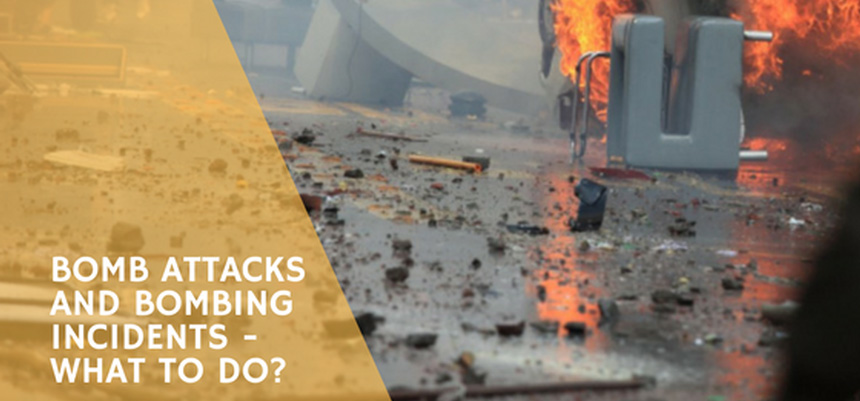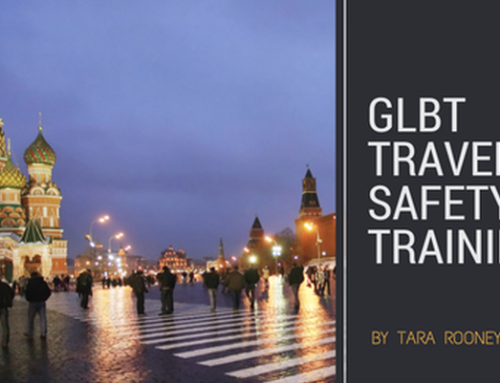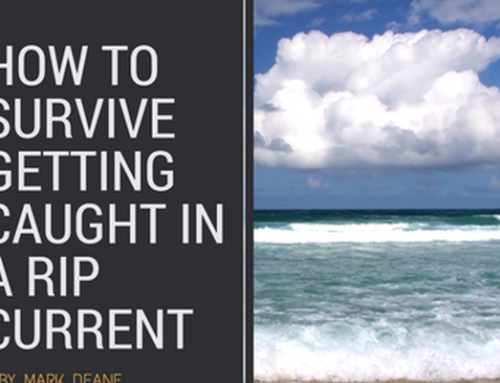Understanding and Surviving Improvised Explosive Device (IED) Attacks
Becoming caught up in a terrorist incident involving some form of bomb or Improvised Explosive Device (IED) is unlikely to ever affect the vast majority of travelers around the world – even those traveling to less permissive or hostile environments. Whilst, however, there are more likely hazards and risks you may be exposed to on your travels it is still prudent to become familiar with both the threat and also what actions you can take should you find yourself in an IED incident.
The information set out below is extracted from guidance issued by the Australian Government this year[1] – every incident and attack is different but the information presented provides an excellent baseline for preparedness and understanding the threat. Check for your own county’s guidance and also what advice your business or organization has issued as part of its own safety guidance and emergency preparedness planning.
Terrorist attack utilizing Improvised Explosive Devices (IEDs)
Terrorist or insurgent attacks using explosives occur regularly around the world. Terrorists favor explosives because of their proven ability to inflict mass casualties, cause fear and disruption in the community and attract media interest. Explosives are also generally within the financial and technical capabilities of terrorists, and IEDs can be assembled with relative ease, and can be used remotely.
An IED target is often chosen for its high symbolic or economic value, its potential to generate casualties and public anxiety, or its ability to gain media attention. This is why extremists generally target public locations where they can achieve the greatest impact—i.e. ‘soft’ targets such as public transport hubs, sporting arenas, entertainment precincts, and shopping centers
The Terminology
Security experts and officials use a number of terms and descriptors when referring to IEDs. Understanding what these mean can help you understand the nature of the incident you may be involved in:
Improvised explosive device (IED) A device made or placed in an improvised way that incorporates destructive, lethal, noxious, pyrotechnic or incendiary chemicals and is designed to destroy, incapacitate, harass or distract.
Person-borne IED (PBIED) or Body-Borne IED (BBIED) An improvised explosive device worn, carried or housed by a person, either willingly or unwillingly.
Vehicle-borne IED (VBIED) An improvised explosive device delivered by or concealed in a vehicle.
Home-made explosives (HMEs) Non-standard explosive mixtures/compounds that have been made or synthesized from readily available ingredients.
Identifying and assessing suspicious objects or activity
Identifying and assessing suspicious objects or activity Identifying suspicious activity is not an exact science. Nervous behavior that appears suspicious in certain circumstances, for example in a shopping Centre or food court, may be typical for other settings, such as about to have a job interview or an examination in college.
Identifying suspicious behavior is a matter of context. Make an informed assessment of suspicious activity or behavior based on:
- The environment
- Experience
- Judgment
- Common sense.
The suspicion of a threat may be confirmed with only one incident or it could take a series of observations. Consider these behavioral signals:
- continuous scanning of an area
- unusual perspiration
- heavy breathing
- fidgeting
- rubbing hands
- pacing
- clock watching
- exaggerated yawning
- avoiding security/uniformed officers
Suspicious Items Discarded
If you see an item such as a backpack or box discarded in a position that is deemed suspicious immediately remove yourself from the immediate location and call the emergency services trying to provide exact information on it’s location and description. If feasible warn those around you to its location. Do not touch or move the item as certain IEDs have devices triggered by movement, may be unstable, or on a visual trigger.
Suspicion or in Identification of an immediate VB/BBIED explosion:
What would you do if someone walks/run into an establishment such as a restaurant or airport and shouts Allah Aqaba, or a vehicle drives into a barricade or through a location and it is assessed that an explosion is imminent. It is important to know the difference between cover and concealment. To obtain cover from an imminent explosion search for solid cement or brick walls/pillars or other significant solid structures. Get as low as possible and preferably lying down with you feet aimed at the site of the imminent explosion, feet and legs close together and your arms and hands protecting your head and face. If no significant cover is available get as low as possible – use the drop between the sidewalk and the road, behind vehicles or anything between you and the potential blast. Anytime you have to increase distance from you and the explosion, utilize it and move fast but stay low – crawling if necessary.
Worse Case – An explosion has occurred – What to Do?
Improvised explosive device (IED) attack— If you are at the immediate site of an IED attack, your top priority is to get out of the area. This increases your safety in case a secondary device is present in the area and minimizes your exposure to dust, smoke, and any hazardous substances that may have been released as a result of the blast. This also allows emergency responders to find and assist the most critically injured victims.
If you are in a building
- Get under a sturdy table or desk if objects are falling around you.
- Exit as quickly as possible, without stopping to retrieve personal possessions or make phone calls.
- Help other victims to leave the area if possible.
- Use stairs instead of elevators.
- Be aware of weakened floors and stairways, and watch for falling debris as you exit the building.
Once you are out of the building
- Move away from windows, glass doors or other potentially hazardous areas.
- Use caution to avoid debris that could be hot, sharp, or cause puncture wounds.
- Continue moving away from the blast site and look for emergency officials who will direct you to a safe location.
- Be aware that secondary explosions may occur at or near the original bombing site, especially as rescue personnel arrive.
- Limit your use of cell phones and other communications devices as much as possible (communications systems may become overloaded).
If you become trapped
- Cover your nose and mouth with anything you have on hand to avoid inhaling dust or other hazardous materials. Dense-weave cotton material can act as a good filter.
- Avoid unnecessary movement so you don’t kick up dust.
- Signal your location to rescuers by using a flashlight (torch), whistle, or by tapping on a pipe or wall.
- Shout only as a last resort. Shouting can cause you to inhale dangerous amounts of dust and drain your energy.
If you are nearby, but not at the immediate site of an attack
- Assess the environment around you before taking any action.
- Avoid being lured closer to see what is happening because the risks from secondary attacks or hazardous materials could be extremely high.
Listen for and follow, instructions from local authorities and building personnel. If no information is immediately available from local officials, stay away from windows and doors and move to an inner area of a building until directed differently by authorities.
Consider utilizing our Explore Secure online Travel Safety training for you or your organization to help improve situational awareness, and learn how to identify threats early to avoid danger. If traveling on business, or heading to areas of increased risk and require other security services ETS Risk Management is a provider of a range of protective services.






